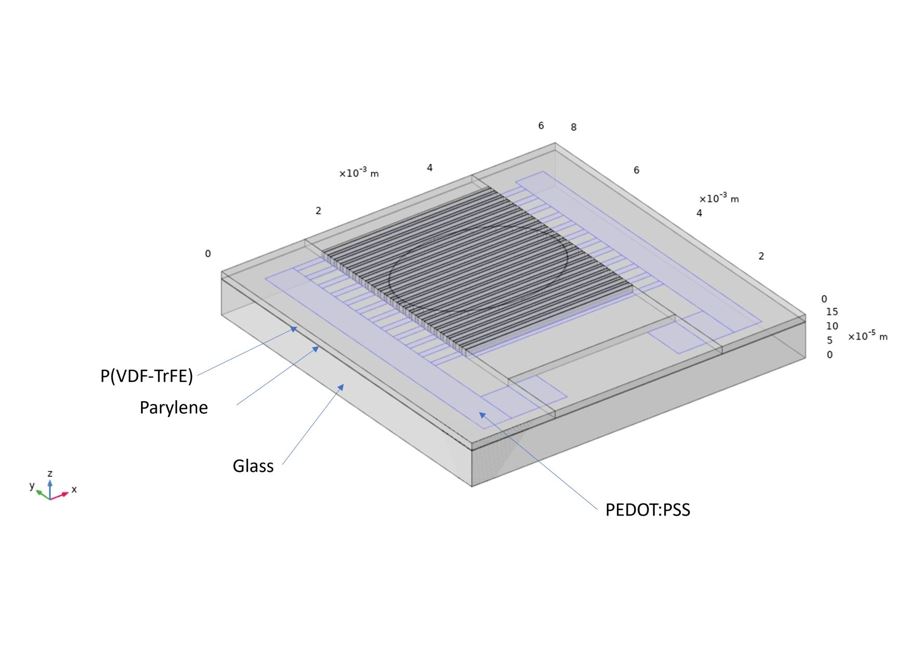We report the development of a finite element model (FE-model) for ultra-thin piezoelectric poly(vinylidene-trifluoroethylene) sensor with interdigitated electrodes (IDE) which includes the effect of a non-homogenous poling field determined via the combination of experimental and numerical methods. The non-homogenous poling magnitude is estimated by comparing the remanent polarization (Pr) of IDE based device to the Pr of the same material in metal–insulator–metal electrode configuration. The non-homogenous poling orientation is estimated by comparing the experimentally determined normal mode sensitivity (Sn) values to FE-modelled sensitivity values with different poling orientation distributions. The poling orientation distribution is modelled using two approaches: (a) 33-direction parallel and perpendicular to the electrode plane and (b) 33-direction defined by an average angle. The first approach yields the best correspondence with the experimental results (R2 = 94.70% and σ = 0.10 pC N−1) and it is used to optimize the device geometry and poling condition for maximum Sn.
Piezoelectric sensor optimization

Mika-Matti Laurila et al published a new article: A combination of experimental and numerical method for optimizing the sensitivity of ultra-thin piezoelectric sensor with interdigitated electrodes
